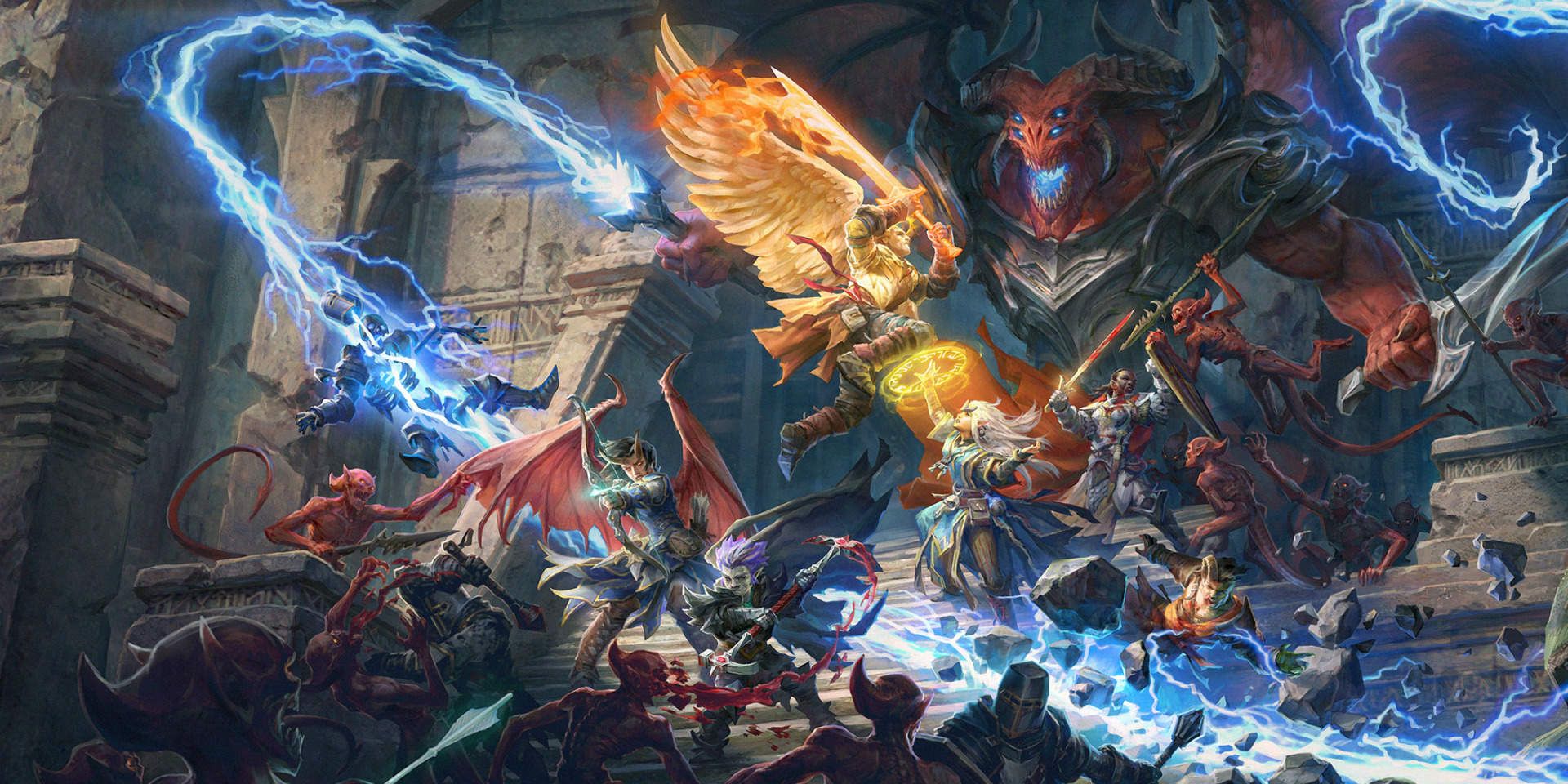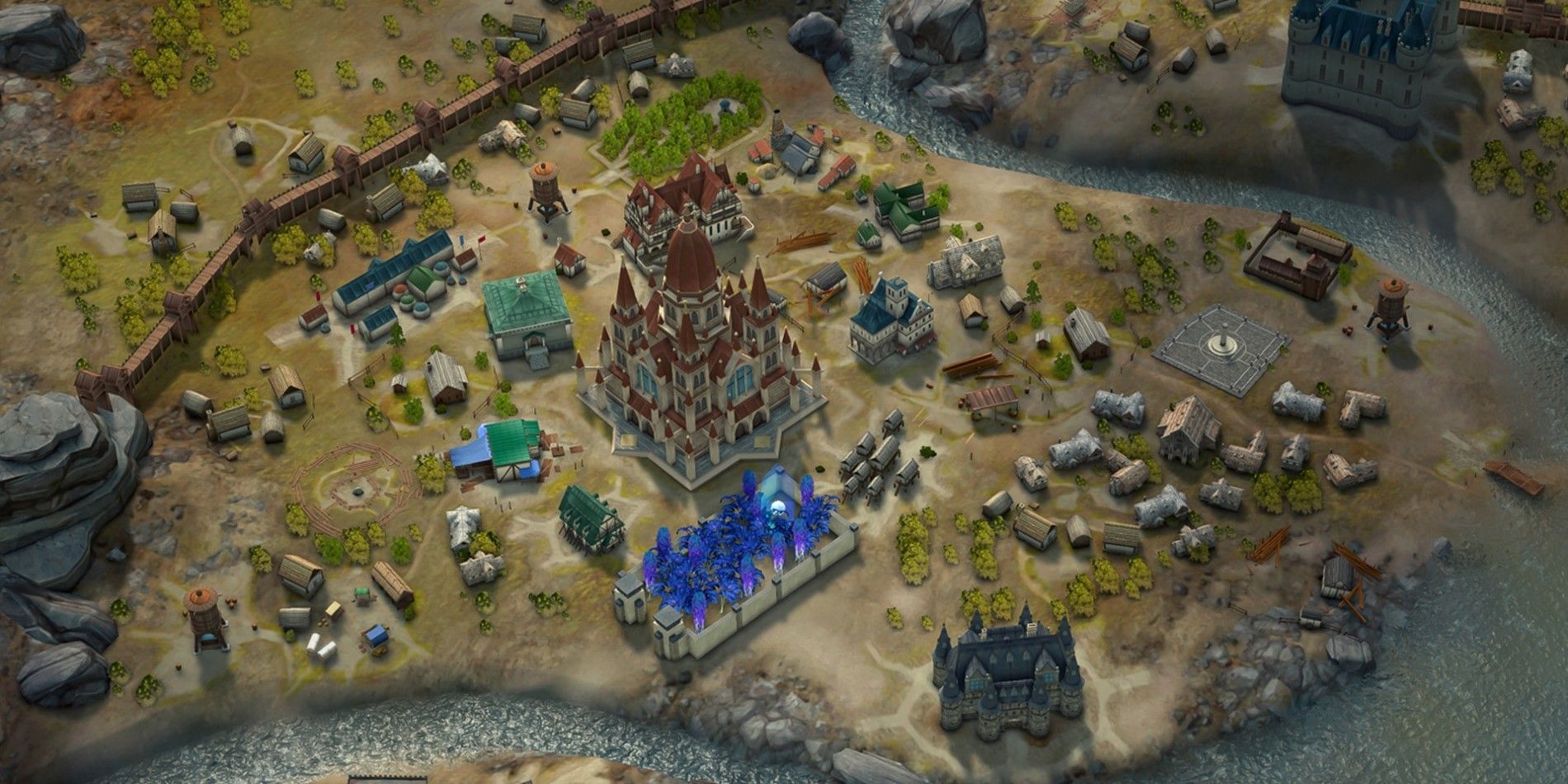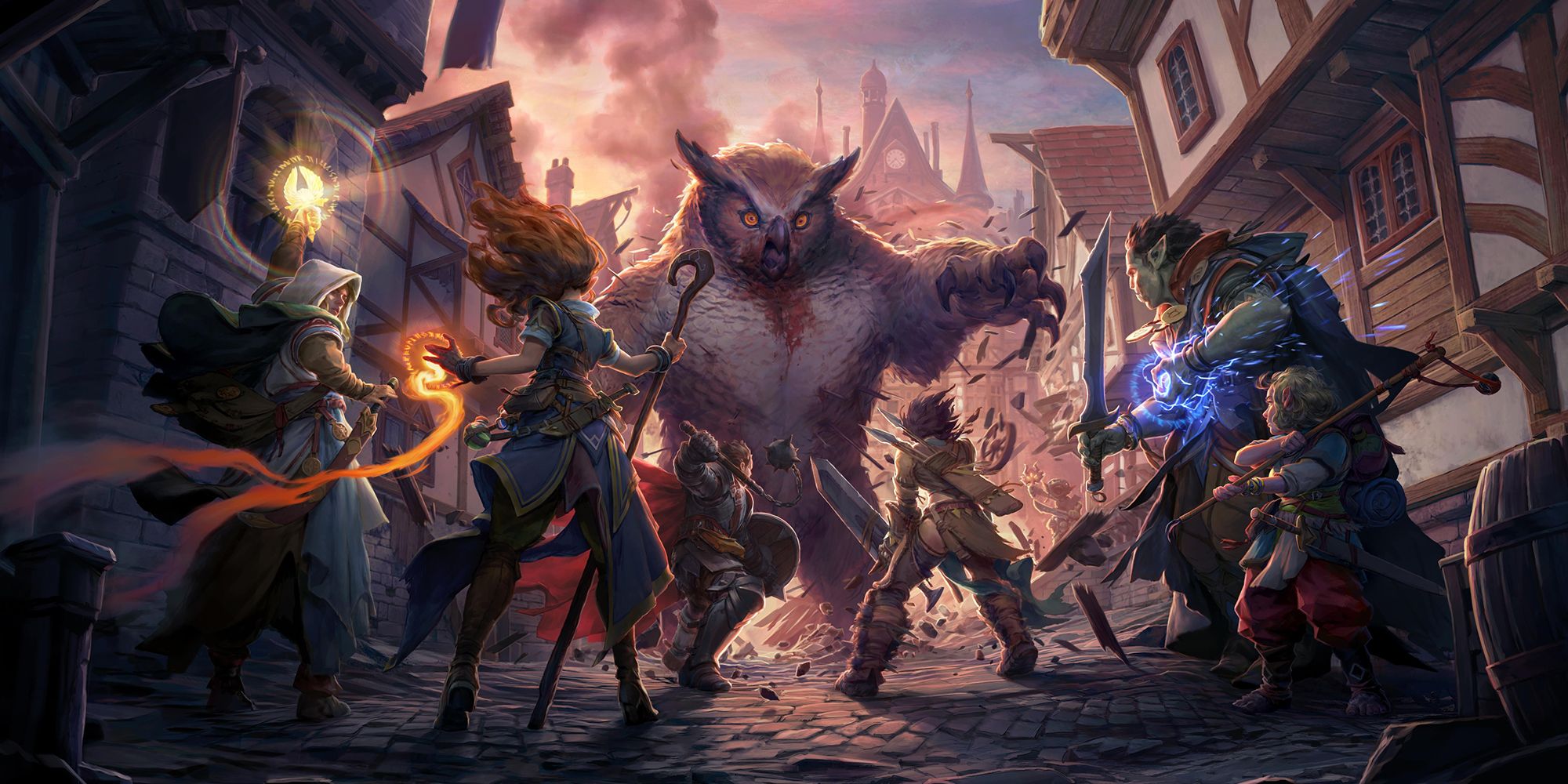The isometric party-based RPG Pathfinder: Kingmaker, released in 2018, adapted an adventure module from the Pathfinder tabletop RPG system into a video game of adventure and conquest, with players rising from humble origins to carve out a kingdom within the war-torn Stolen Lands. Its sequel, Pathfinder: Wrath of the Righteous, besides refining and rebalancing gameplay, will also work to raise the stakes with a plot about heroes saving the world from a demonic invasion and gaining transformative mythic powers in the process.
The original RPG, Pathfinder, has a colorful history. It started out as an updated version of Dungeons & Dragons Edition 3.5, released in 2009, by fans who were dissatisfied with the 4th Edition of D&D and developers who made their living creating content for the 3.5 rulesets. For a time, Pathfinder wound up out-selling Dungeons & Dragons by a notable margin, thanks to scratching the itch of veteran D&D fans and including a wide variety of sub-classes, along with special Feats, that players could use to really customize their characters.
The Pathfinder: Kingmaker and Pathfinder: Wrath of the Righteous cRPG adaptations, made by the Russia-based Owlcat Games studio, both take place in the signature Pathfinder campaign setting of Golarion, a planet whose continents were shattered by an ancient cataclysm. In the present age of this setting, long-entrenched empires ruled by decadent devil-worshipping nobles are splintering apart into schism and civil war. This chaotic setting is a perfect time for lucky soldiers to rise to the position of king, as seen in Pathfinder: Kingmaker, while also being the perfect age for heroes to rise up and save the world, as is the case in Pathfinder: Wrath of the Righteous.
Pathfinder: Kingmaker & Wrath of the Righteous' Stakes
Pathfinder: Kingmaker combines the dungeon-diving and exploration of games like the Baldur's Gate series with kingdom management mechanics. In-between their party-based expeditions, players construct new buildings in their settlements, hire advisors to shape the development of their kingdom, and resolve problem events before they blossom into terrible kingdom-wrecking disasters. Depending on player choices, their kingdom can become a shining bastion of light and prosperity, or a brooding, spike-filled realm of evil that would do the Realm of Mordor proud.
Pathfinder: Wrath of The Righteous also marries RPG antics with logistic gameplay, but rather than a minor kingdom in the Stolen Lands, players are put in charge of the 5th Crusade, a holy military expedition sworn to beat back the demonic hordes and seal up the Worldwound connecting the hellish Abyss into the material plane. As part of this grand crusade, the main character and their party members/generals must recruit new soldiers into the crusade, dispatch armies to fight strategic battles, manage their war-camp, and organize expeditions to retrieve artifacts capable of turning the tide against the demons.
Both Pathfinder Games Focus On The Transformative Aspects Of Power
The theme of "Power Corrupts" is almost certainly present in Pathfinder: Kingmaker, with developers dangling wicked incentives for player to indulge in their Evil Overlord fantasies, commit ruthless acts on the weak, or strike unsavory deals with cruel and whimsical creatures of the Fey. Pathfinder: Wrath Of The Righteous, having no shortage of demonic or demon-worshipping antagonists, will likely also have a plethora of seductive characters and special events designed to tempt players into dark bargains or downright wicked choices.
It may be more accurate, though, to say both these Pathfinder games explore the broader theme of how "power transforms." In Pathfinder: Kingmaker, the player ascends from a humble mercenary to the mighty ruler of a kingdom, gaining impressive abilities and political power while being obligated to make harsh decisions that seem callous and inhumane to the common people. The Mythic Paths featured in the press release for Pathfinder: Wrath Of The Righteous express this theme more explicitly: by acquiring divine powers from a shattered artifact, the main characters become strong enough to defeat the Demon Lords at the cost of transforming into non-mortal, non-human creatures such as Angels, Lichs, Trickster Deity, or even a Demon themselves.
Even if players in Pathfinder: Kingmaker and Pathfinder: Wrath of the Righteous specifically make good choices with the welfare of the common folk, they're still changed by the massive amount of power they've acquired, which alters their perspectives and the way they see the world. These Pathfinder games arguably challenge players with this question: if granted power beyond mortal limitations, would they still be able to maintain their connection to ordinary people and their lives, or would their values, personalities, or perspectives change into something decidedly non-human?
Source: Kickstarter



